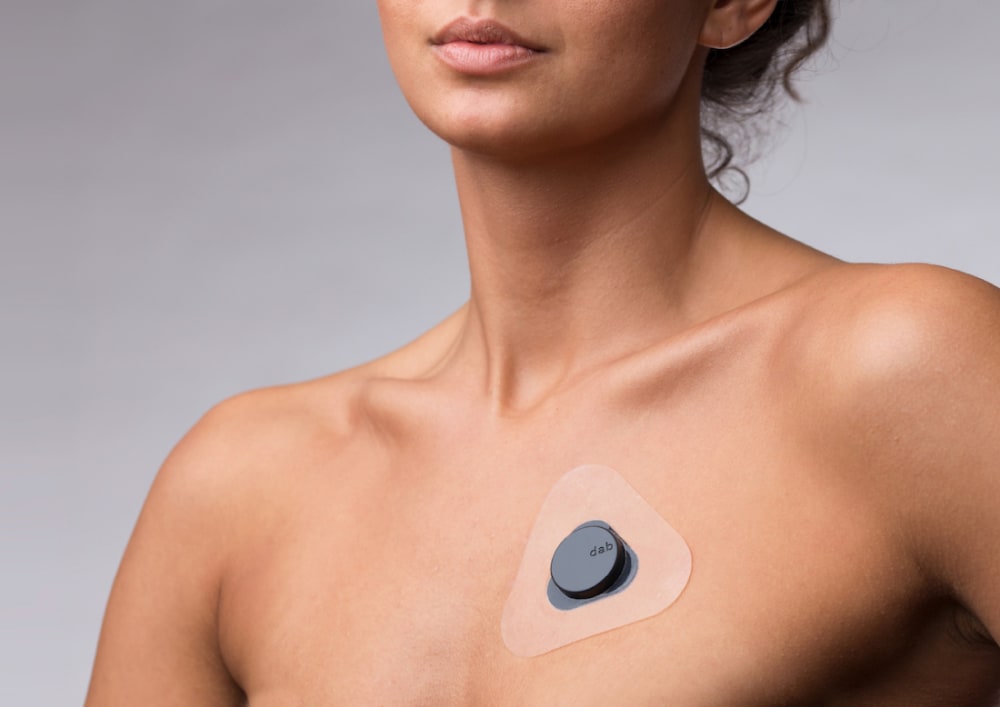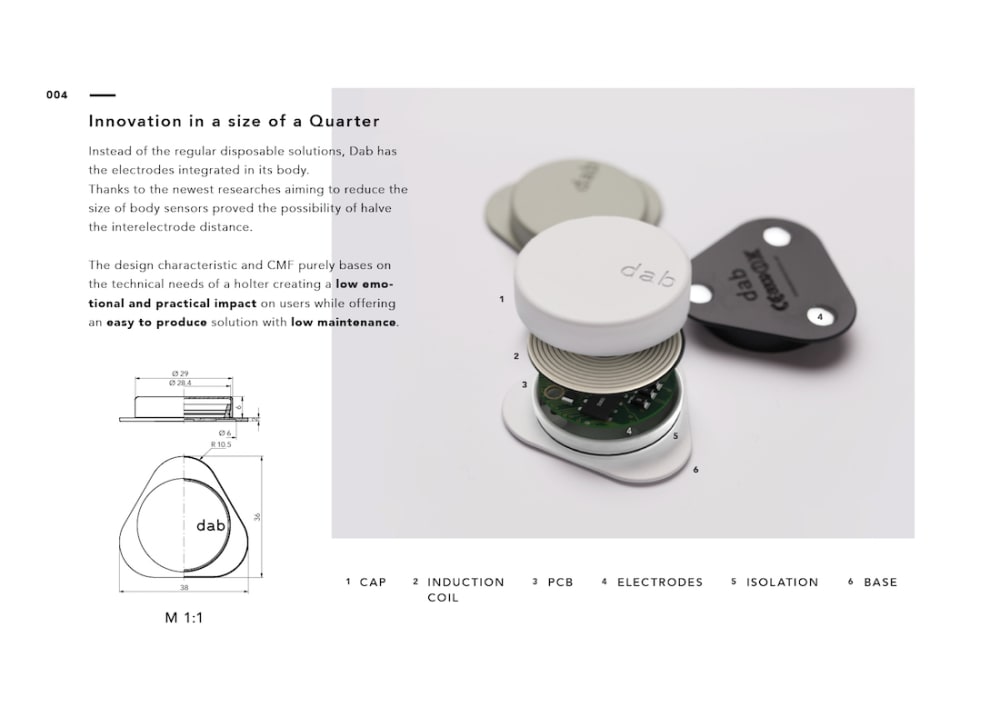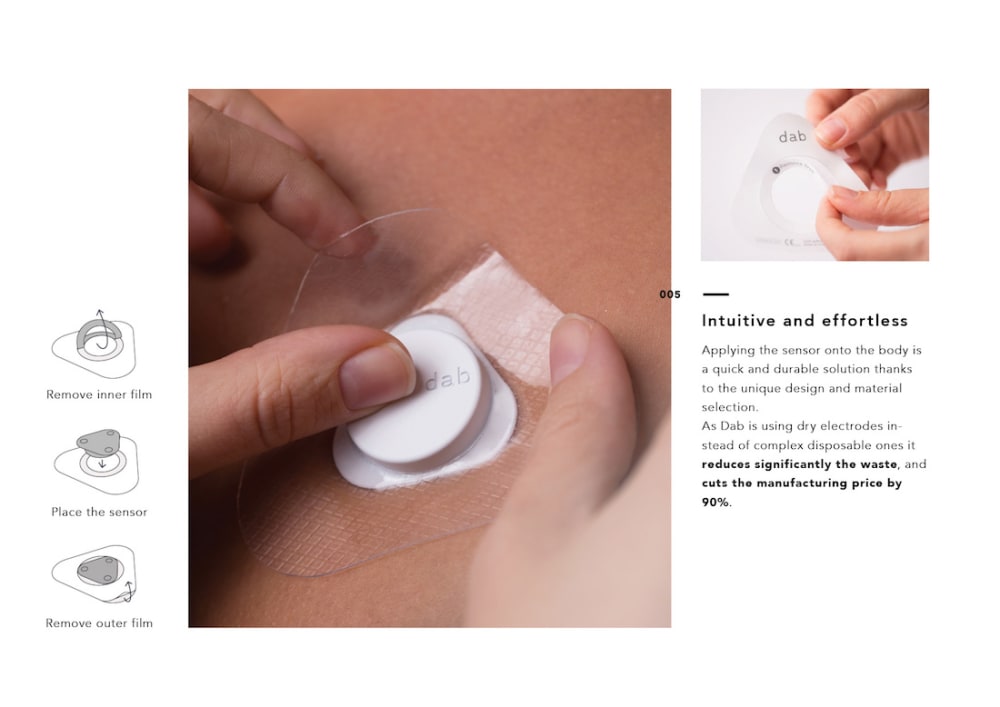
Millions of ECG holter examinations are performed every day to filter Cardio-Vascular Diseases. Holters are attached to the patients' chests during a minimum 24 hours period. The results of a medical examination depends not only on accurate measure but also on ordinary user behavior. Most of the patients behave differently under ECG holtering, which leads to non-accurate diagnosis. Existing ECG holter patches are mostly trying to improve pure technology to get the data as accurate as possible but they forget about user experience during the examinations. In my opinion innovative holtering technology should be applied in a user-centered design.
Dab is aimed to minimize medical instrument size by reducing electrode distances. It is recording data with 3 permanent high-quality silver-alloy dry electrodes. Instead of the regular disposable solutions, Dab has the electrodes integrated in its body and halving the interelectrode distance compare to the existing patches on the market.
The form of the sensor body and the positioning of the electrodes makes sure to maintain a proper contact to the surface of the skin in any kind of situation while protecting the sensor from any unintended removal. The sensor is attached to the body by 2 types of adhesive depends on the lifestyle. There is a highly durable adhesive solution for athletes and a solution for regular daily use by maximizing the comfort. The shape of the bandage The redesigned way of applying the sensor onto the body makes it effortless and intuitive.
The design characteristic and the selection of color-material-finish purely bases on the technical needs of a holter, creating a low emotional and practical impact on users while offering an easy to produce solution with low maintenance. The sensor is Bluetooth connected to a smartphone and all data stored in the Dab cloud, which could be shared to the doctor/hospital. The sensors comes in a set of 3 with an inductive charger, which also work as a tray.
Dab has 2 main elements, the sensor itself and the patch. The sensor is an injection molded ABS plastic, with a high quality silver-alloy dry electrodes insert molded. The electrode positioning (prototype) was tested on participants with different skin conditions and age. The manufacturing of the housing is not more difficult or costly than a PET bottle cap.
The second element is the patch. I tested around 30 different materials used in medication as a bandage, to find the most suitable in terms of durability, manufacturing cost and user experience. By using permanent dry electrodes combined with separate adhesive, instead of disposable electrode adhesives we could lower significantly the manufacturing costs on the disposable items, while saving the electrode.
Unfortunately the market potential is high, as an estimated 17.7 million people died from Cardio-Vascular Diseases in 2015, representing 31% of all global deaths (WHO). Most of the CVD-s would be prevented by regular cardio-vascular examinations and filtering, by improving medical instruments not only from the technological but also from the user-experience side as the "dab" does.
-
Awards
-
 2018 Top 100 Entries
2018 Top 100 Entries
Like this entry?
-
About the Entrant
- Name:Adam Miklosi
- Type of entry:individual
- Patent status:none








